
The Secrets Of The Universe
Exploring the universe from quarks to quasars
Astronomy, Astrophysics, Cosmology Page
This Week in Space 👇
Recent Posts

Physics Term of the Day | Photon | Quantum Physics #physicstermoftheday #physics #quantumphysics #science
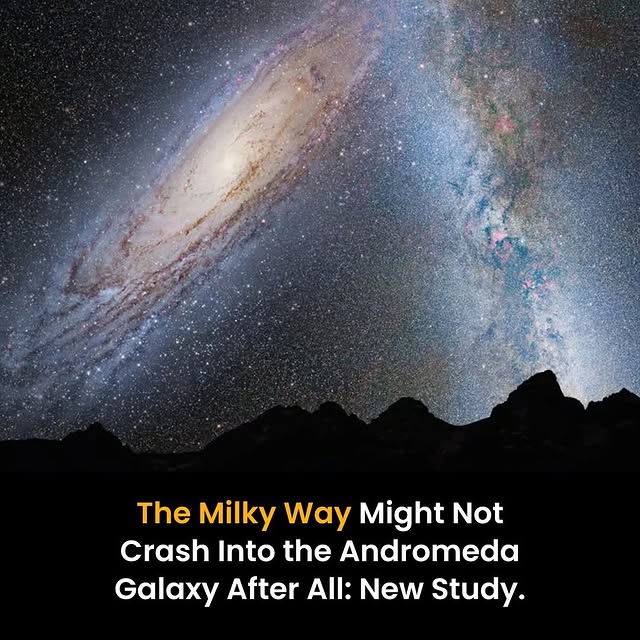
For years, astronomers believed that the Milky Way and the Andromeda galaxy were destined to collide in 4 to 5 billion years, forming a new galaxy dubbed “Milkomeda.” But new research suggests our galaxy might avoid this dramatic fate. A study published in Nature Astronomy reveals there’s only a 50 percent chance of a future merger between these two giants over the next 10 billion years. This new insight comes from thousands of simulations based on data from the Gaia and Hubble space telescopes, which factored in the gravitational effects of nearby galaxies like the Large Magellanic Cloud (LMC) and the Triangulum galaxy. Interestingly, the LMC’s gravity appears to reduce the chance of a collision, while the Triangulum galaxy increases it. Head-on collisions are especially rare—occurring in fewer than 2 percent of cases. Instead, if a merger does happen, it may begin with a distant flyby, slowly draining orbital energy and eventually pulling the galaxies together. Though galactic collisions can distort stars and solar systems, most stars—including our Sun—would likely survive, simply ending up in new orbits. The study emphasizes that with better data, we may one day know for sure whether Milkomeda will ever come to be. For now, our galaxy’s fate remains wide open. RESEARCH PAPER 📄 Till Sawala et al, “No certainty of a Milky Way–Andromeda collision”, Nature Astronomy (2025)
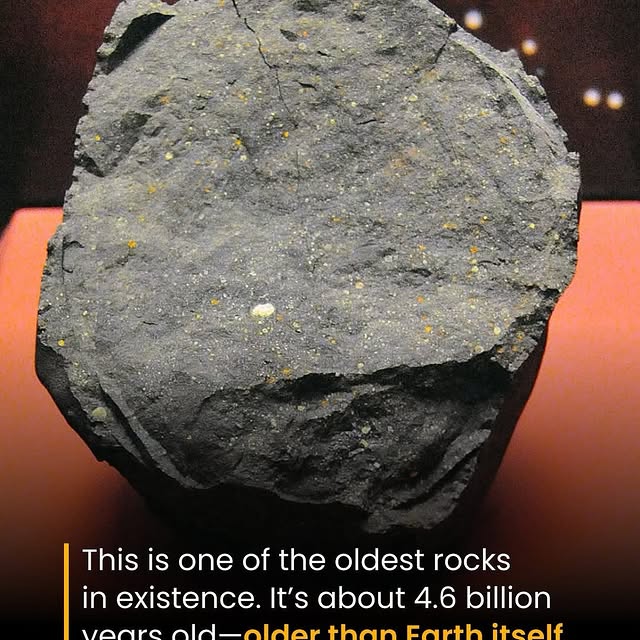
☄️ The Murchison meteorite is one of the most scientifically significant space rocks ever discovered. It fell to Earth on September 28, 1969, near the town of Murchison in Victoria, Australia. A bright fireball was seen streaking across the sky before the meteorite exploded in the atmosphere and scattered fragments across a wide area. What makes the Murchison meteorite so extraordinary is its composition. It’s classified as a carbonaceous chondrite, a rare type of meteorite rich in organic compounds and primitive solar system material. Scientists believe it is over 4.6 billion years old, meaning it formed during the very early days of the solar system. When researchers analyzed the Murchison fragments, they discovered over 70 amino acids—the building blocks of life. Many of these are not found naturally on Earth, strongly suggesting an extraterrestrial origin. In later studies, scientists even identified sugars and nucleobases, which are crucial for RNA and DNA. This raised a profound possibility: the ingredients for life may have been delivered to Earth from space. Additionally, in 2020, researchers found grains of stardust in the meteorite that were dated to be up to 7 billion years old, making them the oldest solid material ever found on Earth. These tiny grains predate our Sun and were likely formed in ancient stars that exploded as supernovae.
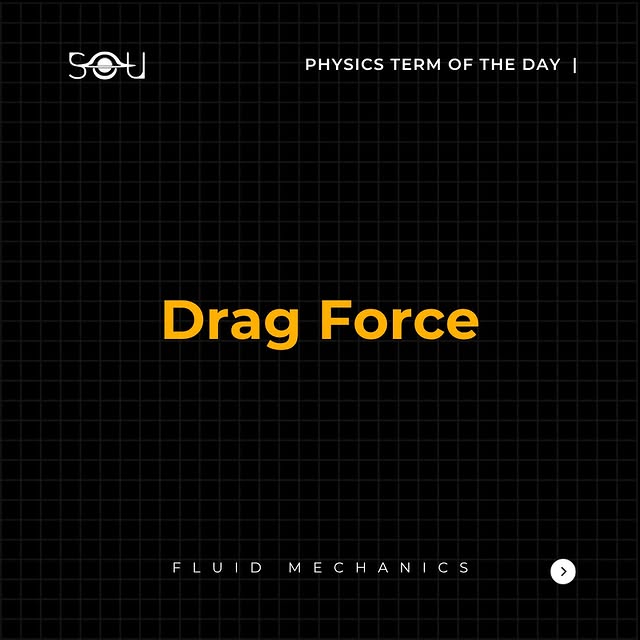
Physics Term of the Day | Drag Force | Fluid Mechanics #physicstermoftheday #physics #fluidmechanics #dragforce
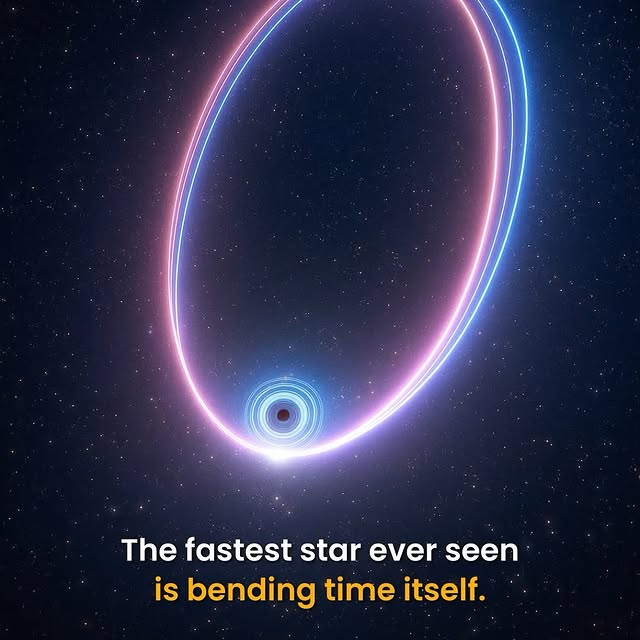
Deep in the heart of our galaxy, astronomers have discovered the fastest known star: S62. Orbiting the supermassive black hole at the Milky Way’s center—Sagittarius A*—this star reaches blistering speeds of over 8% the speed of light (nearly 24,000 km/s or ~53 million mph) during its closest approach. At such velocities, time dilation becomes significant—an hour for S62 would equal about 100 minutes on Earth. S62 orbits Sagittarius A* once every 10 years, weaving a relativistic path so extreme that classical Newtonian physics can’t describe it. Instead of tracing a simple ellipse, S62’s path precesses—shifting like a spirograph—by about 10 degrees per orbit, a clear demonstration of general relativity in action. This behavior mirrors the famed precession of Mercury’s orbit but on a dramatically larger scale. Previously, the star S2 held the record for closest approach, providing astronomers in 2018 with a real-world test of gravitational redshift. Now, S62 presents an even better opportunity to probe Einstein’s theory. As it swings close again to Sagittarius A*, astronomers hope to extract new insights into the nature of gravity and the extreme environment near our galaxy’s central black hole. RESEARCH PAPER 📄 Florian Peißker et al, “S62 on a 9.9 yr Orbit around SgrA*”, The Astrophysical Journal (2020)
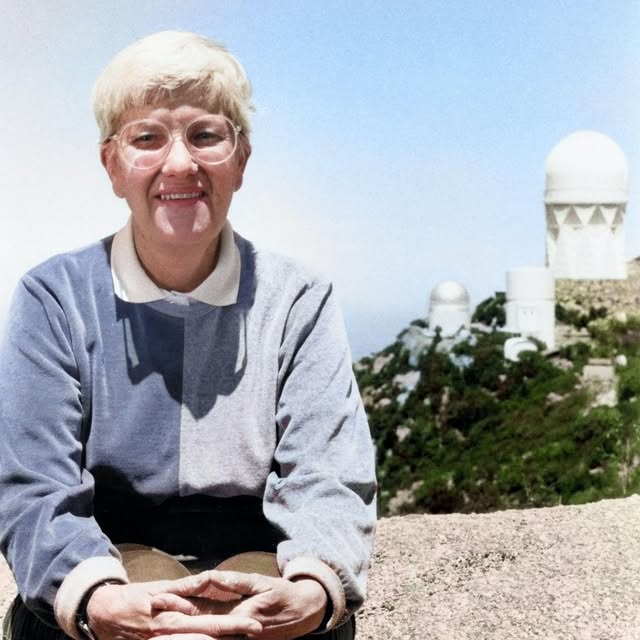
The woman who proved most of the universe is missing…🌌 #TBT #ThrowbackThursday This photograph, taken in the late 20th century, captures the legendary astronomer Vera Rubin seated in front of the iconic dome of the Kitt Peak National Observatory in Arizona. It was here, through countless nights of dedicated observation, that Rubin made one of the most profound discoveries in modern astrophysics. By studying the rotation curves of galaxies, Rubin found that stars at the outskirts of galaxies were orbiting much faster than expected—far too fast for the visible matter alone to account for. Her data provided the first compelling observational evidence for the existence of dark matter, an invisible substance that makes up about 27% of the observable universe. This revelation reshaped our understanding of cosmic structure and marked a turning point in astrophysics. Kitt Peak became more than just a workplace for Rubin—it was a launchpad for discovery. Despite working in an era when women in science were often marginalized, she persevered, revolutionizing our view of the cosmos. Today, her legacy lives on through the Vera C. Rubin Observatory in Chile. This next-generation facility has just released its first breathtaking images as part of the Legacy Survey of Space and Time (LSST)—a project poised to map billions of galaxies and probe the nature of dark matter, dark energy, and the evolving universe.
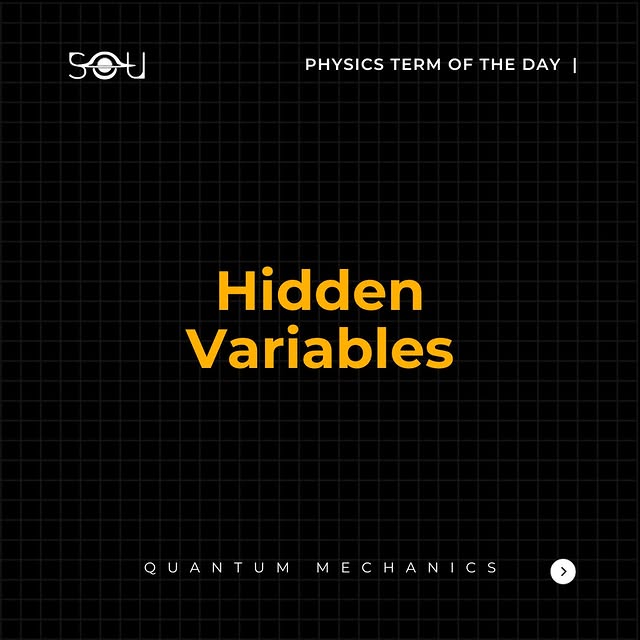
Physics Term of the Day | Hidden Variables | Quantum Mechanics #physicstermoftheday #physics #science #quantummechanics
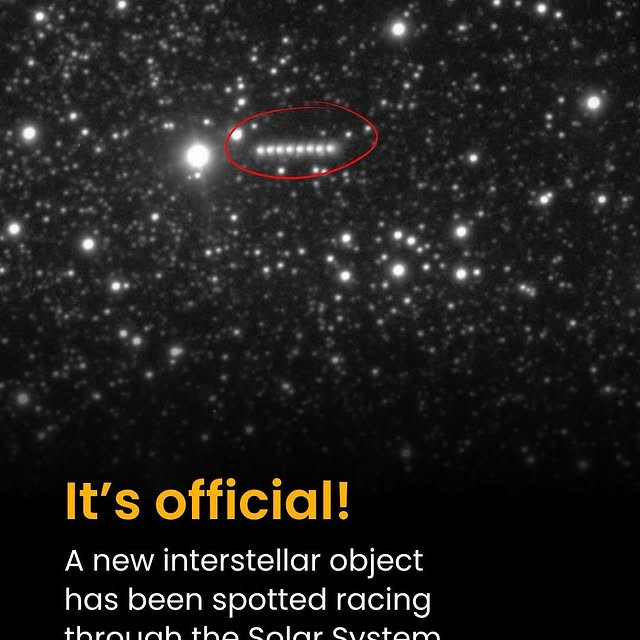
☄️ Astronomers have confirmed a third interstellar visitor passing through our Solar System, officially designated 3I/ATLAS (also C/2025 N1). This remarkable object was first spotted by the ATLAS survey telescope in Chile on 1 July 2025, with follow-up observations quickly establishing a hyperbolic orbit—confirming its origin beyond our Solar System. Traveling at an astounding speed of around 60–68 km/s (≈240,000 km/h), 3I/ATLAS hurtles from the direction of Sagittarius toward our Sun. Its trajectory will carry it within 1.35 AU of the Sun in late October 2025, cross near Mars on 3 October, and swing within 1.8 AU of Earth around 19 December, all while posing no threat to any planet. Initial telescopic data indicate comet-like behavior—a faint coma and short dust tail—but brightness variations are subtle, around 0.2 magnitudes. Its nucleus is estimated to be 10–20 km wide, making it potentially larger than both ‘Oumuamua and 2I/Borisov, although much of its brightness may originate from surrounding dust. Observatories worldwide, including ESO’s VLT, Canada‑France‑Hawaii Telescope, and amateur setups, have captured the clearest images yet, enabling detailed studies of its trajectory and composition. 3I/ATLAS offers a rare opportunity to examine pristine material from beyond our Solar System, shedding light on the formation and evolution of distant planetary systems. As the third confirmed interstellar object—after ‘Oumuamua (2017) and 2I/Borisov (2019)—its discovery signals that such visitors may be more common than previously thought, thanks to improvements in sky surveys and telescope capabilities. The sequence of 3I/ATLAS in this image was captured by ESO’s Very Large Telescope.

New Study Challenges the Core of Modern Cosmology 🚨 For over two decades, scientists have believed the universe’s accelerated expansion is driven by a mysterious force called dark energy—a key part of our standard model of the cosmos. But a new study suggests it could all be an illusion caused by how time flows in different regions of the universe. This bold idea comes from timescape cosmology, a model first proposed by physicist David Wiltshire. It argues that time passes differently in dense areas (like galaxies) compared to vast cosmic voids. If true, this variation in time—up to 35%—could make it look like the universe is expanding faster, without the need for dark energy. Researchers tested the theory using light from 1,535 Type 1a supernovae and found the data fit timescape predictions better than our current ΛCDM model. Though this doesn’t kill the idea of dark energy just yet, upcoming missions like ESA’s Euclid and NASA’s Roman Space Telescope could soon reveal whether we need to rewrite everything we thought we knew about the cosmos. RESEARCH PAPER 📄 Antonia Seifert et al, “Supernovae evidence for foundational change to cosmological models”, MNRAS (2025)

Physics Term of the Day | Escape Velocity | Classical Mechanics #physicstermoftheday #physics #classicalmechanics #science
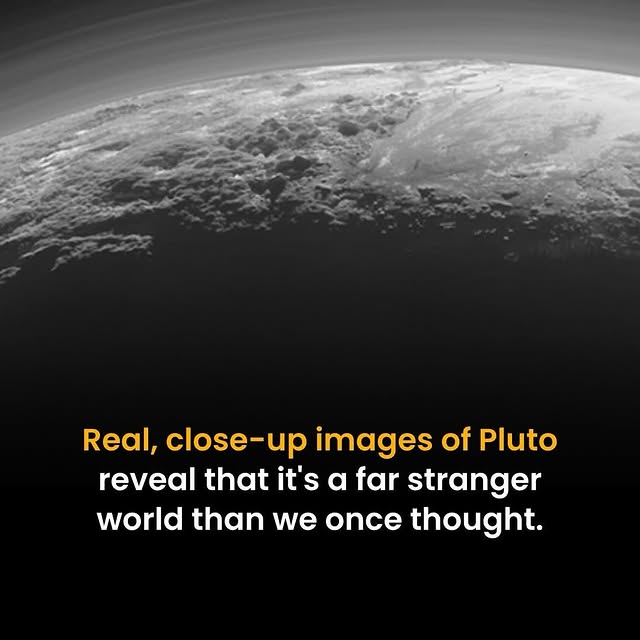
We once thought Pluto was just a frozen, inactive rock at the edge of our Solar System. But then NASA’s New Horizons spacecraft flew by in 2015—and everything changed. For the first time, we saw Pluto up close. What we found was shocking: towering mountains made of water ice, vast plains of frozen nitrogen, and strange patterns on the surface that suggest internal activity. One of the most iconic features is a giant heart-shaped region called Sputnik Planitia—a vast icy basin that may still be reshaped by underground processes. These discoveries challenged everything we thought we knew about small, icy worlds. Despite being over 5 billion kilometers away from the Sun, Pluto is geologically alive. It’s not just a lonely dwarf planet anymore—it’s a world full of mystery, beauty, and complexity.

A Full Moon to Remember 🌕 On the night of July 10, look up and soak in the glow of July’s Full Moon — known as the Buck Moon, a name passed down from Native American traditions. It marks the time of year when male deer begin to grow their new antlers, a symbol of strength and renewal. 📍 Peak illumination: July 10 at 20:36 UTC 🧭 Look southeast as the Moon begins to rise (northeast if you are in the Southern Hemisphere)
Similar Influencers

Quantum Computing & Tech ⚛️

Prompted | Intelligenza Artificiale


Growth Forge AI

AI Strategies | Business Growth

Awakened Truths

CNET

Quantum | Agência de resultado

Physics Funny

the calculus guy

Rachel Barr | Neuroscientist

TECtalks

𝐂𝐡𝐢𝐩𝐮𝐥𝐚𝐫𝐢𝐭𝐲 ™ | 𝐓𝐞𝐜𝐡𝐧𝐨𝐥𝐨𝐠𝐲 | 𝐘𝐨𝐮𝐫 𝐄𝐝𝐠𝐞

Early Startup Days

Taylor Perkins (Cult Daddy)

Space Cameo

Nobel Prize
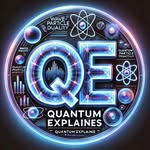
SCIENCE & TECHNOLOGY

Sinéad Bovell

Nathan Hodgson

AI Folks

Startup Archive
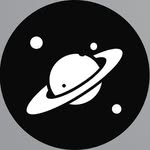
Space | universe | knowledge

Billy Carson

BBC News

David Marsh | Space for Earth

Lucio Arese
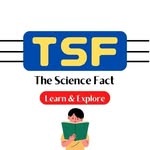
The Science Fact
NPR
